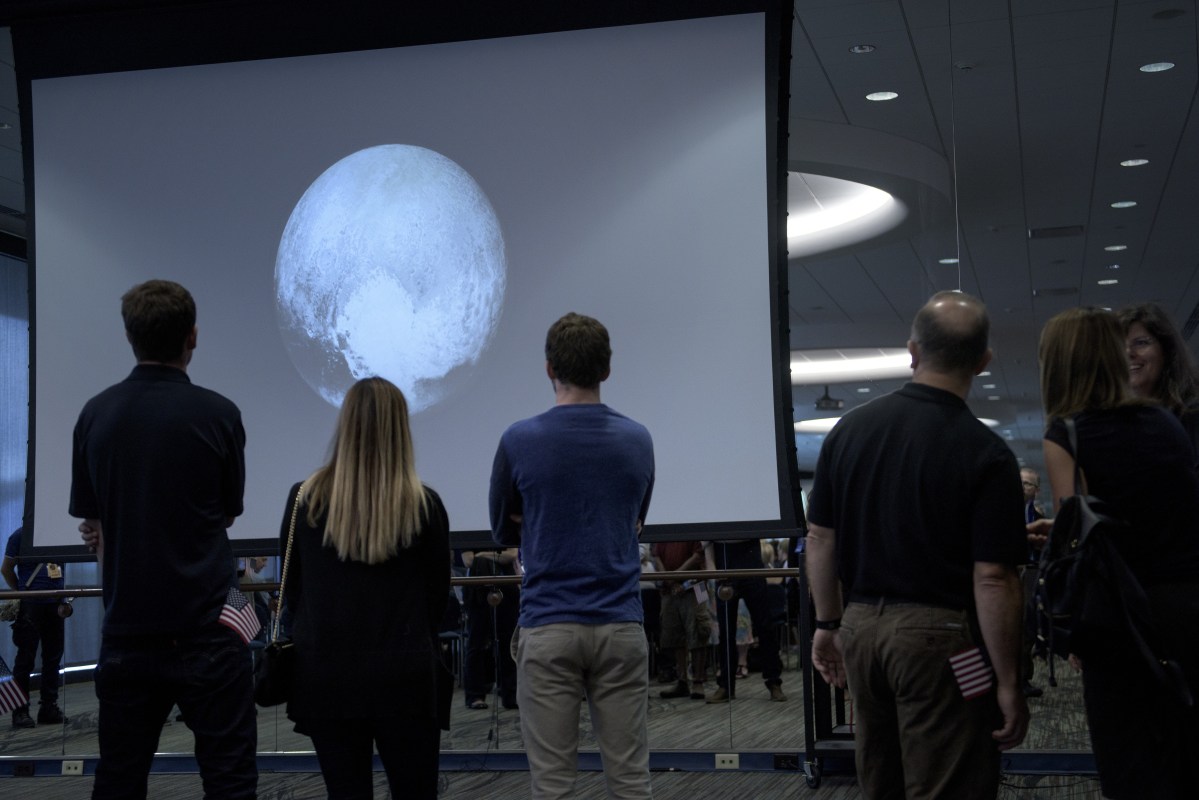Pluto’s landscape has remained relatively unknown until the spacecraft New Horizons sped past the dwarf planet in 2015. Now, National Geographic cartographers have created the first map of the planet. The physical features were officially named by the International Astronomical Union.
The Burney Crater, No. 1 on the map, is named for the 11-year-old British girl who had the idea to name the celestial body “Pluto” after the Roman god of the underworld.
No. 9 on the map is Hayabusa Terra, named for the unmanned Japanese spacecraft that captured the first-ever sample of a near-Earth asteroid in 2005.
In Dante’s Divine Comedy, the spirit of Virgil Fossae guides the author through the levels of hell and purgatory. No. 11 on Pluto’s map is named for the ancient Roman poet.
See National Geographic’s first map of Pluto https://t.co/oI8IoFj7Bl pic.twitter.com/J6a1GBhc9u
— NatGeoMaps (@NatGeoMaps) May 1, 2018
Pluto diameter is 1,476 miles, which is 19 percent of Earth’s 7,926 miles, writes National Geographic.
Thanks for reading InsideHook. Sign up for our daily newsletter and be in the know.


















